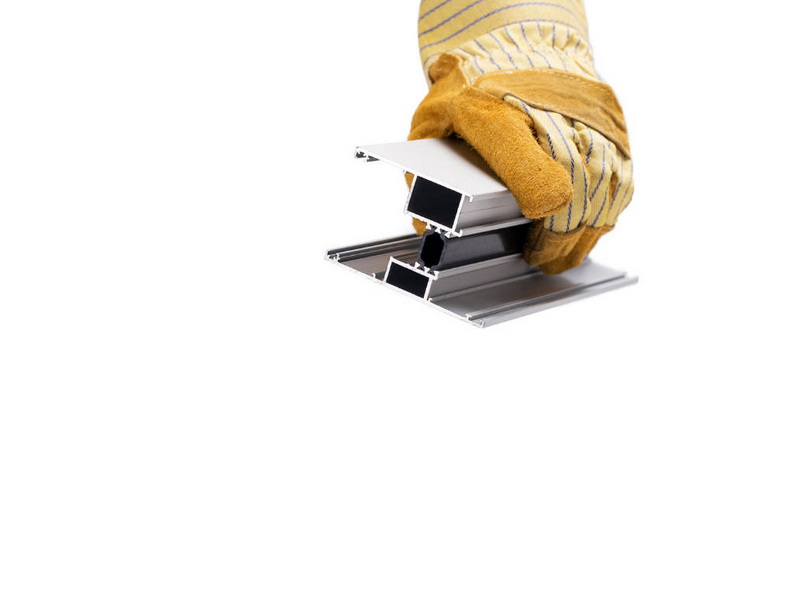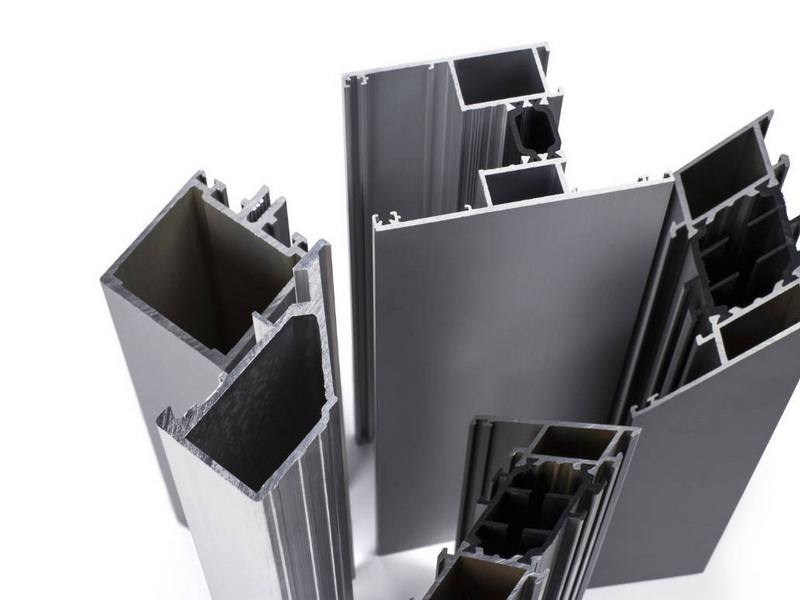English 




Views: 222 Author: Astin Publish Time: 2025-03-28 Origin: Site



Content Menu
● Introduction to LED Aluminum Profiles
>> Benefits of Using LED Aluminum Profiles
● Step-by-Step Installation Guide
>> Step 1: Planning Your Installation
>> Step 2: Preparing Your Tools and Materials
>> Step 3: Cutting the Profile and LED Strip to Size
>> Step 4: Attaching the LED Strip to the Profile
>> Step 5: Mounting the Profile
>> Step 6: Installing the Diffuser and End Caps
● Tips for Professional Installation
● Common Installation Mistakes to Avoid
● Choosing the Right LED Aluminum Profile
● Advanced Installation Techniques
● Frequently Asked Questions (FAQs)
>> 1. What types of LED strip lights are compatible with LED aluminum profiles?
>> 2. Can LED aluminum profiles be used in outdoor applications?
>> 3. How do I choose the right LED aluminum profile for my lighting project?
>> 4. What tools are needed to install an LED aluminum profile?
>> 5. Can I install LED aluminum profiles myself?
Installing an aluminum LED strip light profile is a straightforward process that can enhance the aesthetic appeal and durability of your LED lighting setup. With the right tools and a bit of planning, you can achieve professional-looking results. Here's a comprehensive guide to help you install an aluminum LED strip light profile like a pro.

LED aluminum profiles are designed to house LED strip lights, providing a sleek and modern appearance while improving heat dissipation and light distribution. These profiles come in various shapes and sizes, including surface-mounted, recessed, pendant, and corner profiles, allowing you to choose the best fit for your lighting project.
- Enhanced Aesthetics: Aluminum profiles give your LED lighting a sleek, professional finish.
- Improved Heat Dissipation: The aluminum material helps to dissipate heat generated by the LED strips, extending their lifespan.
- Durability: Protects the LED strips from dust and moisture, making them suitable for both indoor and outdoor applications.
- Versatility: Available in different shapes and sizes to fit various lighting applications.
Before starting, determine where you want to install the LED aluminum profile. Measure the length of the area, taking into account any corners or turns. Choose the type of profile that best suits your application, such as surface-mounted, recessed, or pendant profiles. Consider the color temperature and brightness of the LED strip lights to ensure they match your desired lighting effect.
Ensure you have the necessary tools and materials:
- LED Aluminum Profile: Choose the right profile for your LED strip lights.
- LED Strip Light: Ensure it matches the width of the profile.
- End Caps: For a clean finish and to protect the LED strip ends.
- Mounting Clips or Screws: Depending on the profile type.
- Diffuser Cover: For even light distribution.
- Cutting Tools: Saw for the profile, scissors for the LED strip.
- Screwdriver or Drill: For securing the profile.
- Power Supply and Controller: For powering and controlling the LED strip lights.
Cut the LED aluminum profile to your desired length using a saw suitable for cutting metal. Then, cut the LED strip light to size, ensuring you only cut along the designated lines to avoid damaging it. Always wear protective gloves and safety glasses when cutting.
Peel off the adhesive backing of the LED strip light and stick it into the channel of the aluminum profile, ensuring it is firmly attached and straight. Use a ruler or straightedge to guide the strip for a precise installation.
Secure the aluminum profile to your desired location using mounting clips or screws, depending on your profile type. For surface-mounted or pendant profiles, attach the clips or brackets to the surface first, then click or slide the profile into place. For recessed profiles, insert the profile into the cutout area and secure it with screws. Ensure the profile is level and securely fastened.
Once the profile is mounted, slide or click the diffuser cover onto the profile. Install the end caps on both ends of the profile to give it a clean finish and protect the LED strip ends. The diffuser helps to soften the light and reduce glare.
Connect your LED strip light to your power supply and light controller (if applicable), following the manufacturer's instructions. Test the lights to ensure everything works as expected. Check for any flickering or dim spots, which may indicate loose connections.
- Use the Right Tools: Ensure you have a saw for cutting metal and scissors for the LED strip.
- Clean Installation Surface: Use isopropyl alcohol to clean surfaces before applying 3M double-sided tape.
- Secure Wiring: Use cable ties or clips to organize and secure wiring.
- Plan Ahead: Consider the layout and design of your lighting setup to achieve the desired effect.

- Incorrect Cutting: Always cut the LED strip at designated points to avoid damaging it.
- Loose Connections: Ensure all electrical connections are secure to prevent short circuits.
- Inadequate Mounting: Use the correct mounting method for your profile type to ensure stability.
- Insufficient Cooling: Ensure good airflow around the LED strip to prevent overheating.
When selecting an LED aluminum profile, consider the following factors:
- Width and Type of LED Strip: Ensure the profile is compatible with your LED strip.
- Length of the Profile: Choose a profile that matches your installation length.
- Shape and Design: Select a profile that fits your lighting application, such as corner or surface-mounted profiles.
- Location: Consider whether the profile is suitable for indoor or outdoor use.
- Material Quality: Opt for profiles made from high-quality aluminum for better heat dissipation.
For more complex installations, consider using corner connectors or T-connectors to create seamless transitions between profiles. These connectors allow you to maintain a continuous lighting effect around corners or across multiple surfaces.
After installation, ensure regular maintenance to prolong the lifespan of your LED lighting setup:
- Clean Dust and Debris: Use a soft cloth to wipe down the profiles and diffusers.
- Check Connections: Periodically inspect electrical connections for signs of wear or damage.
- Monitor Performance: Keep an eye on the brightness and color consistency of the LED strips.
Installing an aluminum LED strip light profile is a straightforward process that can elevate your lighting setup both aesthetically and functionally. By following these steps and tips, you can achieve professional-looking results with ease. Remember to choose the right profile for your LED strip and ensure all connections are secure for optimal performance.

LED aluminum profiles can be used with a variety of LED strip lights, including those with different color temperatures and brightness levels. However, it is important to ensure that the width of the LED strip light matches the width of the profile.
Yes, there are LED aluminum profiles specifically designed for outdoor use and are weather-resistant.
When choosing an LED aluminum profile, consider the width and type of LED strip, the length of the profile, the shape and design of the profile, and the location of the lighting application.
You will need a saw for cutting the profile, scissors for the LED strip, mounting clips or screws, a screwdriver or drill, and end caps.
Yes, installing LED aluminum profiles is relatively simple and can be done by both professionals and DIY enthusiasts.
[1] https://www.topledprofile.com/blog/a-step-by-step-guide-on-how-to-install-led-aluminum-profiles-230810c8-04eb-4951-a464-467a158c05d8
[2] https://www.linkedin.com/pulse/comprehensive-guide-using-aluminum-profiles-led-strips-mylikeled-5a8lc
[3] https://darklessled.com/how-to-install-led-aluminum-profile/
[4] https://www.vst-lighting.com/installing-aluminium-profiles-for-led-tape/
[5] https://www.topledprofile.com/blog/led-aluminum-profile-frequently-asked-questions-and-answers
[6] https://www.ledyilighting.com/ultimate-guide-to-aluminum-profile-for-led-strip/
[7] https://www.aspectled.com/blog/post/how-to-install-aluminum-channel-with-led-strip-lights/
[8] https://www.topledprofile.com/blog/the-step-by-step-guide-how-to-install-led-strips-in-aluminum-profiles
[9] https://beslagdesign.com/en/inspiration-2/2023/12/04/installation-and-mounting-of-aluminum-profiles-with-led-strips
[10] https://aidiwattlighting.com/led-aluminum-profiles-the-ultimate-buying-guide/
[11] https://www.decasacollections.com/installing-led-profiles-for-modern-lighting-design/
[12] https://profiledecor.com/install-led-strip-lights/
[13] https://www.vst-lighting.com/how-to-install-aluminium-channel-for-led-strip-lighting/
[14] https://kingornan.com/led-aluminium-profile-guide-2022/
[15] https://avidelighting.com/useful-information/faq-questions-about-led-strips
[16] https://muzataled.com/blogs/product-features/led-profile-lights-complete-guide
[17] https://stavianmetal.com/en/the-most-accurate-method-for-installing-aluminum-profile-led-lights/
[18] https://www.ledsupply.com/blog/7-tips-before-installing-led-strip-lights/
[19] https://mardomdecor.com/en/blog/led-profile-in-the-wall-step-by-step-installation/
Top Aluminum Furnitures Manufacturers and Suppliers in Czech Republic
Top Aluminum Furnitures Manufacturers and Suppliers in Poland
Top Aluminum Furnitures Manufacturers and Suppliers in Belgium
Top Aluminum Furnitures Manufacturers and Suppliers in Finland
Top Aluminum Furnitures Manufacturers and Suppliers in Denmark
Top Aluminum Furnitures Manufacturers and Suppliers in Greece
Top Aluminum Furnitures Manufacturers and Suppliers in Portugal
Top Aluminum Furnitures Manufacturers and Suppliers in Austria
Top Aluminum Furnitures Manufacturers and Suppliers in Norway
Top Aluminum Furnitures Manufacturers and Suppliers in Sweden
